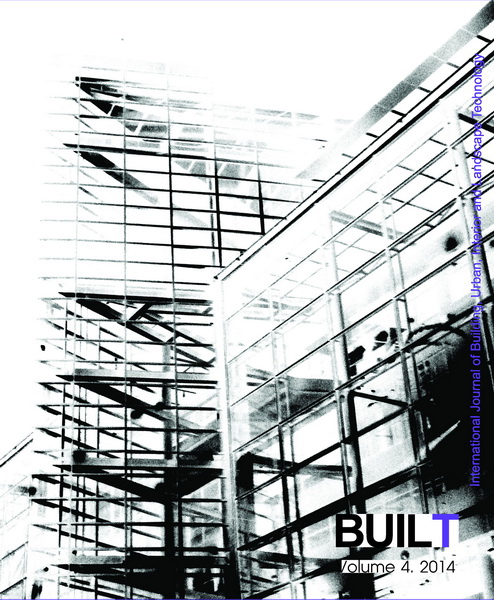Public Housing Development and Low-Carbon Society Transitions: National Housing Authority’s Experiences and Applications
DOI:
https://doi.org/10.56261/built.v4.170257Keywords:
Climate change, Low-carbon society, Public housing, Eco-village, Energy efficiencyAbstract
Presently, the growing interest of a low-carbon society is widely concern on various sectors of development. Housing sector is directly associated with of climate change and it needs to be studied and explored how low-carbon society principle integrates into housing policy and practice. Particularly, affordable public housing in Thailand to low and middle-income people in the country is one prioritized solving issues. Therefore, extensive knowledge of low-carbon society concerning environs and quality of living can be incorporated into providing public housing patterns. This article presents a public housing development under National Housing Authority (NHA) of Thailand, what is initiative program of National Housing Authority has been implemented to advance low-carbon innovation in the country context. The analysis is an investigation on existing NHA’s researches and pilot projects how it contributes to achieve a low- carbon transition along with sustainable development policy.
Downloads
References
Center of Excellence on Energy and Environment [CEEE]. (2013). Khon Kaen-Towards low carbon society. Retrieved August 12, 2013, from http://2050.nies.go.jp/report/file/lcs_asialocal/khon_kaen.pdf
Golubchikov, O. & Deda, P. (2012). Governance, technology, and equity: An integrated policy framework for energy efficient housing. Energy Policy, 41, 733-741.
Iamtrakul, P., Satichob, P. & Hokao, K. (2013). Comparing the efficiency of urban components in proximity to transit service area. International Journal of Building, Urban, Interior and Landscape Technology, 2, 21-33.
Intergovernmental Panel on Climate Change [IPCC]. (2013). Annex I: Atlas of global and regional climate projections - final draft underlying scientific technical assessment. In Working group I contribution to the IPCC fifth as sessment report (AR5), Climate change 2013: The physical science basis, (pp. 1-83). Switzerland: Author.
Intaraprasong, T. (2013). CO2 Emission in Thailand. Retrieved September 10, 2014, from http://www.ccop.or.th/ccsm/data/9/.../TH_CCOP_CCSM_T2.pdf
National Housing Authority [NHA]. (2013). A housing survey in Thailand (Final Report). Japan International Cooperation Agency (JICA) and International Development Center of Japan.
National Housing Authority [NHA]. (2014). Affordable housing development standard for low and middle income people. Retrieved September 25, from http://www.nha.co.th
Oliver, J. G. J., Janssens-Maenhout, G., Muntean, M. & Peters, J. A. H. W. (2013). Trends in global CO2 emissions; 2013 Report, The hague: PBL Netherlands environmental assessment agency. Ispra: Joint Research Centre.
Savage, V. R. & Lin-Heng, L. (2011). Environment and climate change in Asia: Ecological footprints and green prospects. Singapore: Pearson Education South Asia.
Sirindhorn International Institute of Technology [SIIT]. (2010). Low-carbon society vision 2030 Thailand. Retrieved December 1, 2011, from http://www.siit.tu.ac.th/pdf/LCS_Thailand_2030.pdf
Sreshthaputra, A. (2012). Green building guru, Research for a living green. Journal of House and City to Develop Housing and City, 15, 6-10.
Tantasavasdi, T., Chenvidyakarn, T. & Pichaisak, M. (2011). Integrative passive design for climate change: A new approach for tropical house design in the 21st century.International Journal of Building, Urban, Interior and Landscape Technology, 1, 13.
The World Business Council for Sustainable Development [WBCSD]. (2009). Transforming the market: Energy efficiency in buildings world business council for sustainable development. Geneva, Switzerland: Author.
United Nations Environment Programme, Sustainable Building and Climate Initiative [UNEP-SBCI]. (2009). Buildings and climate change: Summary for decision-makers. Paris, France: Author.
Wankanapon, P., Suwanchaiskul, A., Srisuwan, P. & Tantasavasdi, C. (2012). Benefits of Roof-Mounted Solar Cells for Low-Cost Residential Buildings. Journal of Architectural/Planning Research and Studies, 9(2), 49-61.
Yuan, H., Zhou, P. & Zhou, D. (2011). What is low-carbon development? A conceptual analysis. Energy Procedia, 5, 1706-1712.
Downloads
Published
How to Cite
Issue
Section
License

This work is licensed under a Creative Commons Attribution-NonCommercial-NoDerivatives 4.0 International License.












